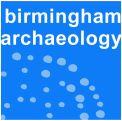Proposed BCU Eastside Campus, Banbury Street, Birmingham. Archaeological Evaluation
Birmingham Archaeology, 2017. https://doi.org/10.5284/1046301. How to cite using this DOI
Data copyright © University of Birmingham unless otherwise stated
This work is licensed under the ADS Terms of Use and Access.
Primary contact
Historic England
1 Waterhouse Square
138-142 Holborn
London
EC1N 2ST
UK
Tel: 01793 414700
Fax: 01793 414707
Resource identifiers
- ADS Collection: 2918
- DOI:https://doi.org/10.5284/1046301
- How to cite using this DOI
Introduction

During April and May of 2008, Birmingham Archaeology was commissioned by ARUP on behalf of Birmingham City University to undertake an archaeological evaluation in advance of a proposed new campus development at Banbury Street in Birmingham (centred on NGR SP 0768 8698). Eight trenches were excavated in four different areas revealing varying degrees of preservation and truncation at the site.
The depth of modern overburden and the truncation by later cellar and foundations along the road frontages of Banbury Street and Bartholomew Street, suggested it was unlikely that significant archaeological features would have survived in these areas. As no evidence for the medieval or post-medieval cultivation soil found during nearby excavations was uncovered during the current evaluation, it is possible that a great degree of post-medieval truncation has occurred across the majority of the site, removing all but the earliest deposits.
However, several gully and pit features were recorded in the trenches on the eastern half of the site. The features uncovered within Trenches 5, 6 and 7 contained an organic rich peaty deposit which also formed a layer overlying them. The environmental analysis of the samples taken from these trenches has revealed the peaty deposit to be prehistoric in date, possibly dating to between c. 7000-3000 years BP. The survival of organic material within this deposit was very high indicating the possibility for preserved wooden objects or structural remains. Although the majority of the features appeared man-made in origin, no cultural material was recovered from within them.
The majority of the post-medieval brick wall foundations and cellars uncovered across the site probably relate to those structures first seen on the early 19th century maps of Birmingham. The cellars fronting onto New Canal Street are likely to represent the row of terraced houses shown on the 1st edition Ordnance Survey map. These were still present as up-standing structures on the 1937 Ordnance Survey map when the majority of the other residential properties within the site had been superseded by industrial buildings.
The evaluation at Eastside has provided results pertaining to the site’s archaeological and archaeo-environmental importance. The BCU campus development site is extremely significant in terms of increasing our knowledge of Birmingham’s prehistoric past.







